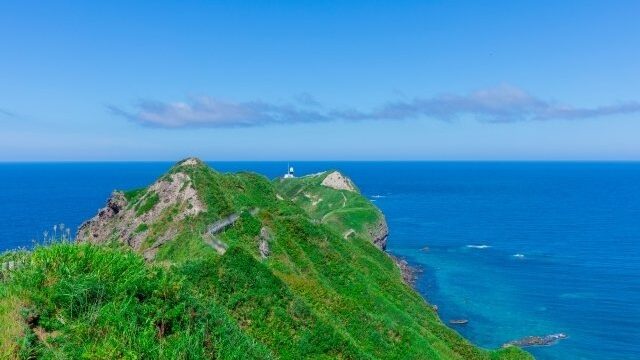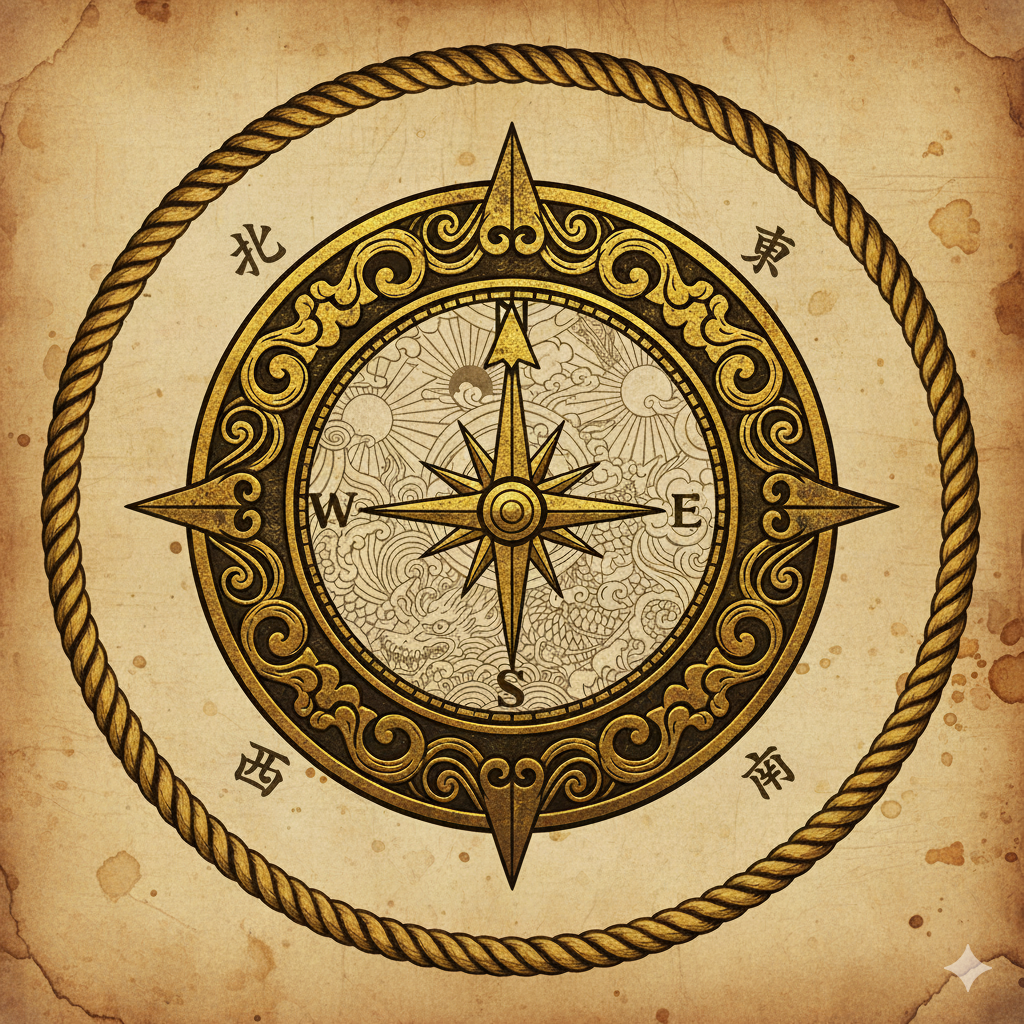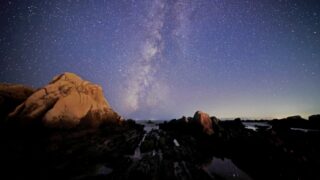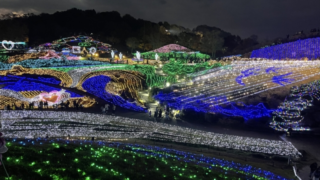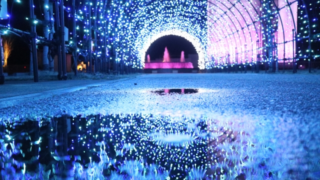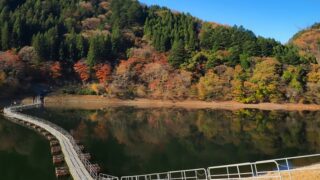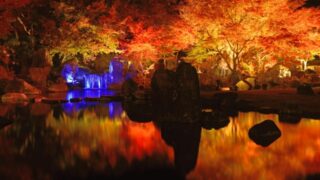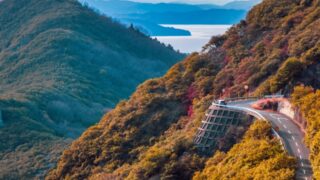2026 Stargazing Plan for Ibaraki, Tochigi, Gunma, Saitama, and Chiba: Meteor Showers and Constellation Spots!
A complete guide to enjoying 2026’s astronomical events under the best conditions with your camper van as a mobile observation base. Let’s chase the starry skies comfortably while avoiding light pollution.
1. Why Camper Vans Are Perfect for Stargazing
The Kanto region is surrounded by urban lights, making stargazing challenging. However, with a camper van as your “mobile observation base,” you can turn this disadvantage into an advantage.
Advantages of Camper Van Observation
- Freedom to escape weather and light pollution: Move quickly to clear skies when clouds appear, or to darker areas when city lights are too strong
- Overwhelmingly easier cold weather countermeasures: Even during winter meteor shower observations, you can warm up inside the vehicle, allowing for extended viewing sessions
- Safe transport of observation equipment: Safely transport large telescopes, tripods, and camera gear, with the ability to prepare inside the vehicle
- Access to toilets, power, and heating: Comfortable all-night observations
- Easy to try multiple locations: Visit several spots in one night or spend a few days searching for the best location
Kanto Area Characteristics and Route Planning
Recommended observation spots fall into two main categories.
Northwest Route (Dark Mountain Skies): Mountain areas in Gunma, Tochigi, and Chichibu in Saitama. High altitude and distance from the city center make them ideal for deep-sky observations. With a camper van, simply climbing higher in the mountains significantly reduces light pollution.
Southeast Route (Open Coastal Skies): The Boso Peninsula in Chiba. With the southern sky opening toward the Pacific Ocean, it’s excellent for observing the center of the summer Milky Way and comets at low southern positions. Coastal roadside stations are available.
Most of Saitama and Chiba prefectures have strong light pollution, so the key to success is leveraging your camper van’s mobility to continuously move to darker locations.
2. Notable Astronomical Events of 2026: Annual Observation Calendar
2026 offers excellent conditions for the three major meteor showers, especially the August Perseids coinciding with a new moon—a once-in-several-years opportunity.
2.1. Three Major Meteor Showers: Camper Van Advantages
🌠 Three Major Meteor Showers Guide 2026 🚐
A vehicle with an FF heater is invaluable. Use roadside stations or RV parks in northern Kanto as your base, and warm up inside immediately after late-night observations. The peak is short, so mobility for quick relocations is crucial.
Take full advantage of zero moonlight conditions. Observe all night along the Boso Peninsula coast or in the Chichibu mountains. Sleep in your vehicle while observing over two consecutive nights. These are the best conditions in years!
Arrive at a nearby roadside station in the evening, observe after dinner, then sleep inside. The next morning, relax at a hot spring. Despite the bright moon, the high meteor count ensures an enjoyable experience.
Perseids Meteor Shower: Perfect New Moon Conditions
The August 2026 Perseids meteor shower offers excellent conditions. While the peak is at 11:00 AM on August 13 (daytime), the moon phase is 0 (new moon), meaning the preceding and following nights have absolutely no moonlight interference.
Camper Van Advantages:
- Comfortably observe over two consecutive nights: late night August 12 through morning August 13, and late night August 13 through morning August 14
- Choose locations based on weather: southern tip of Boso Peninsula with open southern sky, or high-altitude Chichibu for dark skies
- Take naps inside the vehicle without missing the optimal viewing times
This new moon period is perfect not just for meteor showers but also for observing and photographing the center of the summer Milky Way (Sagittarius and Scorpius). Heavy photography equipment can be easily transported in a camper van, and the interior can serve as a darkroom.

Geminids Meteor Shower: Convenient Evening Peak
The Geminids peak around 8:00 PM on December 14, making it easy to time your observation. Expect to see about 60 meteors per hour at peak.
Enjoying with a Camper Van:
- Arrive at a roadside station near your observation site in the evening and start observing after dinner
- Focus observation around the peak time
- Combine with facilities like Mashiko Town Astronomical Observation Facility for expert commentary
- Sleep in the vehicle after observing, then head to nearby attractions or hot springs the next morning
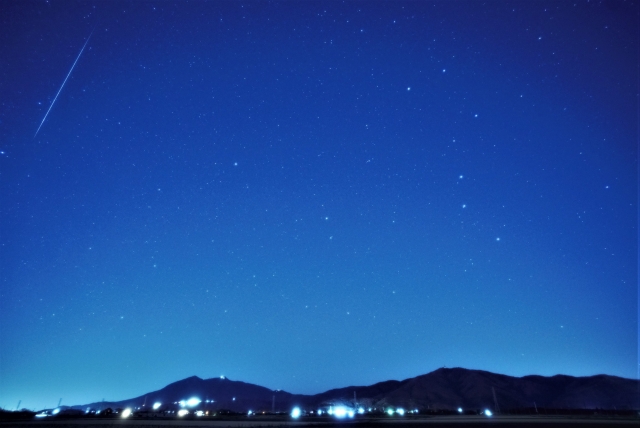
Quadrantids Meteor Shower: Midwinter Challenge
The Quadrantids peak around 1:00 AM on January 4, with a high ZHR of 80. However, the peak is short and winter observation requires thorough cold-weather preparation.
Essential Camper Van Equipment:
- FF heater or electric heating (sub-battery powered)
- Well-insulated vehicle
- Heating system that can maintain warmth even at -10°C external temperatures
Mountain areas in northern Kanto (Gunma, Tochigi) are particularly cold, so your camper van's heating capacity will determine whether you can continue observing.

2.2. Comets and Other Highlights (2026 Forecast)
Besides meteor showers, 2026 features total lunar eclipses and close conjunctions of Venus and Jupiter, all enjoyable with the naked eye or binoculars.
Detailed comet forecasts for 2026 will be published in astronomical yearbooks and astroguide annual guides. These observations also benefit from camper van mobility, allowing you to find locations where the horizon is clearly visible.
3. Northern Kanto Area (Tochigi, Gunma, Ibaraki): Dark, High-Altitude Sites with Your Camper Van
The three northern Kanto prefectures are far from the Kanto Plain's lights and feature dark mountain environments and well-equipped observatories.
3.1. Tochigi Prefecture: Combining Observatories with RV Stays
Tochigi Prefecture offers the darkest skies in northern Kanto and the most facility-based observation options.
Mashiko Town Astronomical Observation Facility Space 250
- Northern Kanto's largest 250mm refractor telescope
- Detailed explanations by astronomical observation instructors during viewing sessions
- Reservation required (groups of 5+, adults ¥400, elementary/middle school students ¥200)
- Adjacent to accommodation facility "Forest Inn Mashiko"
- Camper Van Benefits: Possible parking lot pre/post-stay (confirmation required), stay overnight after the viewing session, then explore Mashiko pottery the next morning
Otawara City Fureai-no-Oka Astronomical Observatory
An important facility in the dark sky area of northern Tochigi. Consistently reliable clear night sky observations.
Nikko & Nasu Region
For independent observations without facilities, the Nikko and Nasu national park areas offer high altitude and very low light pollution.
Camper Van Considerations:
- Check which forest roads and observation deck parking lots are accessible at night
- Be cautious of frozen roads in winter (4WD or studless tires required)
- Weather can change rapidly above 1,200m altitude
- Roadside stations "Nikko" and "Nasu Kogen Yuai-no-Mori" are convenient bases
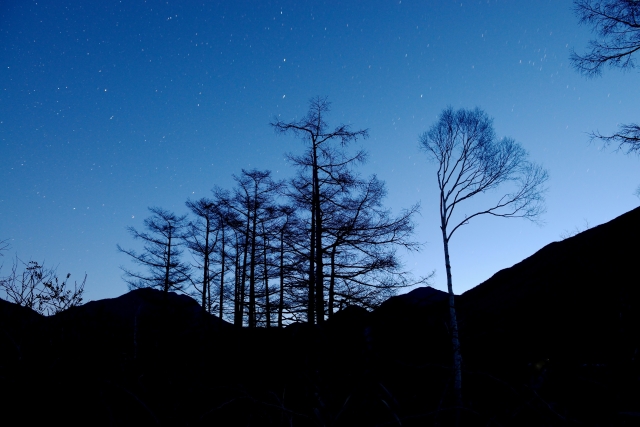
3.2. Gunma Prefecture: Research Facilities and RV Parks
Gunma Prefectural Astronomical Observatory
- One of Japan's largest telescopes
- Located above 1,000m altitude in the Akagi mountain range with minimal light pollution
- Professional programs including high-magnification planetary observations
- Camper Van Usage: Parking lot RV stays require confirmation. Use nearby RV Park "Ikaho Onsen" (Shibukawa City) as base, visit observatory during day, then conduct independent observations at surrounding dark sites late at night
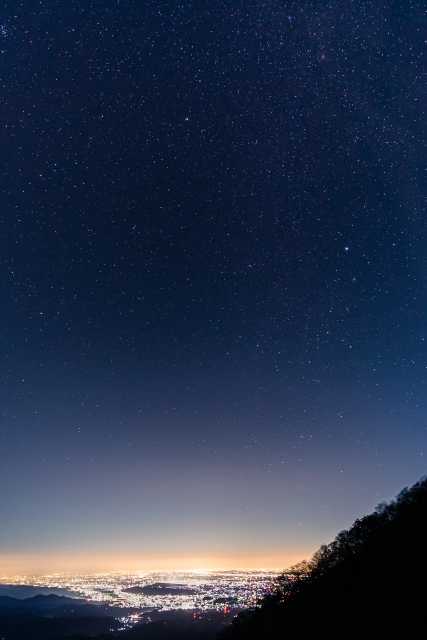
3.3. Ibaraki Prefecture: Dark Skies of Oku-Kuji and Campgrounds
Oku-Kuji Region (Daigo Town area)
- Ibaraki Prefecture's darkest area
- Mountain region bordering Fukushima Prefecture, perfect for meteor shower observations
- Daigo Comprehensive Park Auto Campground Green Villa: Sites with electrical hookups, camper van friendly
- Extended stay combining camping with astronomy
- Daytime hiking and Fukuroda Falls sightseeing available
While the Mount Tsukuba area is also visible, light pollution affects observations, so focus on lunar, planetary, and bright star cluster observations.
4. Eastern/Southern Kanto Area (Chiba, Saitama): Avoiding Light Pollution with Your Camper Van
Southern Kanto has strong light pollution, making countermeasures essential. This is where camper van mobility truly shines.
4.1. Chiba Prefecture: Boso Peninsula Coastal Route
The Boso Peninsula's major advantage, unlike northern Kanto mountains, is its wide-open southern sky.
Boso Flower Line Area (Tateyama City, Minamiboso City)
Facing the Pacific Ocean with an unobstructed southern sky. Advantageous over northern Kanto mountains for observing the center of the summer Milky Way (Sagittarius, Scorpius) and comets passing through low southern positions.
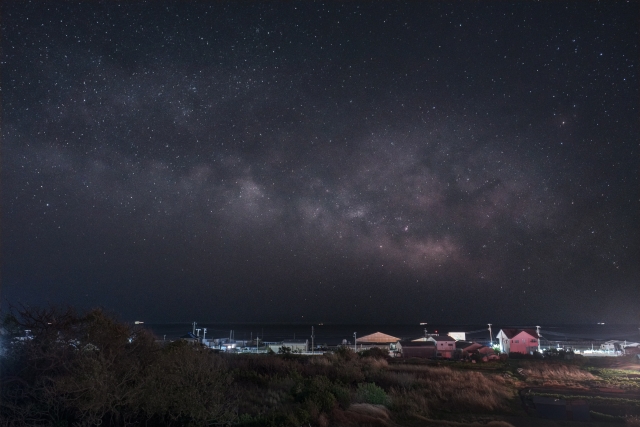
Camper Van Base Candidates:
- Roadside Station "Furari Tomiyama" (Minamiboso City): 24-hour access, hot springs available, 5-minute drive to Nojimazaki Lighthouse (observation site)
- Roadside Station "Rosemary Park" (Minamiboso City): Along Boso Flower Line, base for southern Boso coastal observation spots
- Tateyama City Okinoshima Park Parking Lot: Confirm night access, completely open southern sky
Light Pollution Countermeasures: When choosing observation sites, ensure clear views from southeast to south to avoid urban light interference.
4.2. Saitama Prefecture: Chichibu Mountains with Campground Bases
Chichibu-Tama-Kai National Park (Western Area)
One of Saitama Prefecture's few dark locations. Extremely convenient as an "emergency escape" for securing dark skies within a short drive from Tokyo during optimal conditions like the August 2026 Perseids (new moon).
Camper Van Compatible Facilities:
- PICA Chichibu (Chichibu City): Camper van sites, AC power available, approximately 700m altitude, 10-minute drive to hot spring facility "Mangan-no-Yu"
- Otaki Genki Plaza Parking Area (Chichibu City): Public facility parking (confirm night use), access to deeper dark sites like Nakatsugawa Forest Road
Mobile Observation: About 2 hours from Tokyo, enabling flexible "check weather forecast → depart immediately for Chichibu" observations. Camper vans allow spontaneous overnight stays without advance reservations.
5. Seasonal Observation Guide: Year-Round Touring with Your Camper Van
Considering Kanto region light pollution, here's a summary of seasonal highlights and how to maximize your camper van.
🌌 Seasonal Observation Guide 2026 🚐
FF heater essential. Warm up inside every few hours between observations. M42 is bright enough for detailed viewing through Space 250's telescope in Mashiko.
Galaxies are faint, requiring northern Kanto's darkest locations. Mobility to climb mountain roads for altitude gain is crucial.
During August 2026 new moon period, photograph and observe the Milky Way core from Chiba's southern tip with its open southern sky. Flexibility to visit multiple locations is key.
Large but faint, requiring dark locations completely away from Tokyo. Combining Gunma/Tochigi facilities with independent observations is effective.
5.1. Winter (January-March): Vehicle Heating Key to Continued Observation
Winter's night sky features nebulae and clusters like the Orion Nebula (M42) and Pleiades (M45). Combined with Quadrantids meteor shower observations, facilities like Mashiko Town Space 250 with large telescopes reveal M42's intricate gas structures clearly.
Essential Camper Van Equipment:
- FF heater or electric heating (sub-battery powered)
- Ability to maintain interior +15°C or above at -10°C external temperature
- Electric blankets, warm beverages
- Red LED lantern (doesn't interfere with others' dark adaptation)
5.2. Summer (July-September): Milky Way Core and Meteor Showers
Summer observations focus on the Milky Way core (Sagittarius/Scorpius) diffuse nebulae (M8, M20). These are low on the southern horizon and light-sensitive, so the August 2026 Perseids new moon conditions are perfect for observing from locations like the southern Boso Peninsula with its open southern sky.
Camper Van Summer Equipment:
- Portable air conditioner or ventilation fan (sub-battery powered)
- Insect countermeasures (screens, mosquito coils)
- Large-capacity sub-battery (for photography equipment power)
- Reclining chair (set outside vehicle for full-sky observation)
6. Camper Van Astronomy Safety and Precautions
6.1. Top Recommendation for 2026
The absolute best opportunity for Kanto astronomy in 2026 is **maximizing the August 13 Perseids meteor shower (moon phase 0)**. During this period, thoroughly observe and photograph the summer Milky Way core along with the meteor shower from dark locations like Chichibu or southern Boso Peninsula.
Throughout the year, two approaches work well:
- Facility-combined (beginners/education/midwinter): Center activities around Tochigi's Mashiko Town Space 250 and Gunma's Prefectural Observatory, using expert commentary and large equipment for thorough observations. Stay at nearby roadside stations or RV parks.
- Seeking dark skies (advanced/photography enthusiasts): Tour Saitama Chichibu, Ibaraki Oku-Kuji, and Chiba southern Boso Peninsula, pursuing optimal conditions and nearly zero light pollution night skies. Mobilely move between multiple locations based on weather and light pollution.
6.2. Camper Van Observation Rules and Safety
Facility Usage Precautions:
- Popular facilities like Mashiko Space 250 require reservations 7 days in advance for groups of 5+
- Confirm facility parking lot overnight stays in advance
- Peak times get crowded, so early reservations and multiple backup locations are essential
Rules to Follow:
- Respect national park and designated area nighttime entry restrictions
- Don't trespass on private property
- Confirm campground and park nighttime usage restrictions in advance
- Roadside station extended parking etiquette (toilet usage, trash disposal)
Safety Management:
- Recognize nighttime driving risks and take proper rest breaks
- Use red lights (don't interfere with others' dark adaptation)
- Prepare for rapid mountain weather changes (cold weather gear, food/water supplies)
- Ensure emergency contact methods (phone charging, confirm out-of-service areas beforehand)
- Vehicle maintenance checks (especially winter heating, summer cooling)
Camper Van Specific Precautions:
- Confirm observation site road conditions (gravel roads, unpaved road height/width restrictions)
- Ensure safety when parking on slopes (use wheel chocks)
- Manage sub-battery capacity (prevent battery depletion during extended heating use)

🌌 Kanto RV Stargazing 2026: Frequently Asked Questions
Kanto Stargazing Guide
2025-2026 Northern Kanto, Saitama & Chiba Complete Astronomy Guide
Observation Spot Comparison: Kanto Top 5
Selected from each prefecture for minimal light pollution and good accessibility. The chart below compares "observation suitability" based on darkness, accessibility, and sky openness.
Observation Suitability Score (0-100)
Higher scores indicate less light pollution and better stargazing conditions. Tochigi's "Senjogahara" and Gunma's "Oze" are especially recommended for their darkness.
2026 Astronomy Calendar
2026 offers excellent major meteor shower and planetary observation opportunities. Check this chronological timeline for unmissable astronomical events.
Quadrantids Meteor Shower (Peak)
New Year's meteor shower. Short peak duration but high meteor count expected.
Spring Galaxy Season
Countless galaxies in Leo and Virgo directions. Telescope observation recommended.
Milky Way & Summer Triangle
Summer sky highlight. Especially at dark locations like Senjogahara, enjoy the magnificent Milky Way.
Perseids Meteor Shower (Peak)
Summer classic. Minimal moonlight interference, excellent observation conditions expected.
Saturn at Opposition
Closest approach to Earth, observable all night. Perfect opportunity to see the rings through a telescope.
Jupiter at Opposition
Jupiter at its brightest. Galilean moons and cloud bands easier to observe.
Geminids Meteor Shower (Peak)
Year's largest meteor shower. Cold weather preparation essential, but well worth it for the meteor count.
Three Major Meteor Showers Comparison
2026's observation opportunities for the "Quadrantids," "Perseids," and "Geminids" three major meteor showers. Compare each shower's predicted peak meteor count (ZHR) ratio to see which is most active.
Predicted Meteor Count (ZHR) Ratio
The "Geminids meteor shower" expects the highest meteor count. ZHR is a theoretical maximum value, differing from actual observation counts, but serves as an activity indicator.
Seasonal Constellation Guide
Major constellations and celestial objects reaching peak visibility each season. Radar charts show "must-see target" visibility for each season.
Winter (Dec 2025 - Feb 2026)
Clearest air, brightest stars. Orion Nebula and Pleiades are spectacular.
Spring (Mar - May 2026)
"Spring Arc" is the landmark. Point telescopes toward the Virgo galaxy cluster for distant universe views.
Summer (Jun - Aug 2026)
Densest Milky Way season. Navigate the Milky Way using the "Summer Triangle" as your guide.
Autumn (Sep - Nov 2026)
"Autumn Square" is the landmark. Under good conditions, challenge yourself to find the Andromeda Galaxy with the naked eye.
Observation Equipment Checklist
Essential equipment and mindset list for fully prepared observations.
- ★
Cold Weather Gear (Critical)
Even summer nights get cold. Winter requires ski-level gear for safety.
- ★
Red Light
Cover flashlights with red cellophane to protect dark-adapted vision.
- ★
Star Chart / App
Essential tool for identifying visible stars.
- ★
Binoculars / Telescope
Enjoyable with naked eye, but binoculars greatly enhance cluster and galaxy observations.
- ★
Warm Beverages
Thermos-stored warm drinks comfort both mind and body during extended observations.
Stargazing in Kanto's five prefectures in 2026 will be an adventure journey armed with your camper van's mobility and comfort, chasing the best starry skies while avoiding light pollution. Safety first, and enjoy the magnificent cosmic scenery!





